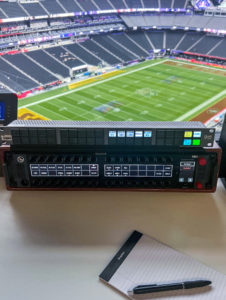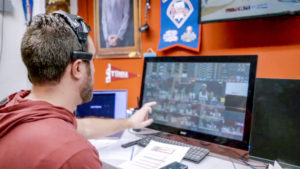Media & Entertainment (M&E) organizations have for some time been experimenting with AI to solve business challenges with limited success. Near 100% accurate data is an ask in some use cases, for which off the shelf AI solutions have failed to deliver. Add to this data that is not actionable, and the problem of effort, time, and cost overruns get compounded.
Let’s take the case of Basic Metadata. Till now, AI solutions have not been able to solve this comprehensively.
The industry requires AI models that can effectively address unique M&E use cases. There is a need to detect and identify physical segments and content segments from short-form and long-form content. The current practice involves operators visually looking up content and segments like Blacks, Color Bars, Slates, and marking content manually. In Long-form content, Re-caps, Pre-caps, Montages, Credits, Essence, and many other custom segments specific to the content house or broadcaster have to be marked. These are extremely time-consuming efforts and when the output is not near 100% accurate, leads to inefficiencies in the workflows.

Every M&E organization understands the need for automating this laborious task at high speed, especially when dealing with short-form spots or when the content from linear has to be published to streaming platforms. However, technology solutions available in the market today have left much to be desired. Those which identify Blacks using an image or signal processing cannot tolerate the variation in Blacks and Color Bars, from various sources. Detection of more sophisticated segments like Slates, Re-caps, Pre-caps, and Montages, requires deeper cognition. There is also a need to identify these segments accurately every time and also frame accurately, to ensure the workflow can be fully automated.
A solution to automate such a workflow and address this unique business need will require sophisticated AI technologies, powered by deep learning. The variations of the segments and content warrant human-like recognition to identify the segments accurately, while remaining sensitive to the wide variety of content. The solution should also accommodate the possibility of customization to address a specific customer need while fitting seamlessly into an existing workflow. This will allow for recognitions to be done using AI and a quick QC as well on top of that. In some cases, a Manual QC can help the machine continue to keep learning newer patterns and varieties for the segments.
The need of the hour is an AI-enabled segmentations engine that can be trained to recognize segments with accuracy and is customizable for a customer’s workflow and content types. An ideal AI solve for metadata should be able to help identify physical segments with 100% accuracy and 100% frame accuracy:
- Blacks, Color Bars, Slates, Pre-caps, Re-caps, Montages
- Essence
- Text segments
- Specific captioned segments
- Textless segments
- Custom segments based on customer need
Such a solution will ensure complete automation of workflow to extract content segments with significant reductions in cost and manual effort. Once identified, to execute downstream activities, it ought to work seamlessly within an existing workflow that will allow automatic identification of segments followed by a quick QC.
AI platforms for M&E enterprises should ensure better searchability/discoverability and superior metadata. If close to 100% accurate data can be achieved, then AI has done its job. We humans, love ‘more’. We always want more. It’s not too far when AI can not just be accurate, it can also help humans by actioning some of the tasks for them? That would be a delight, wouldn’t it!









